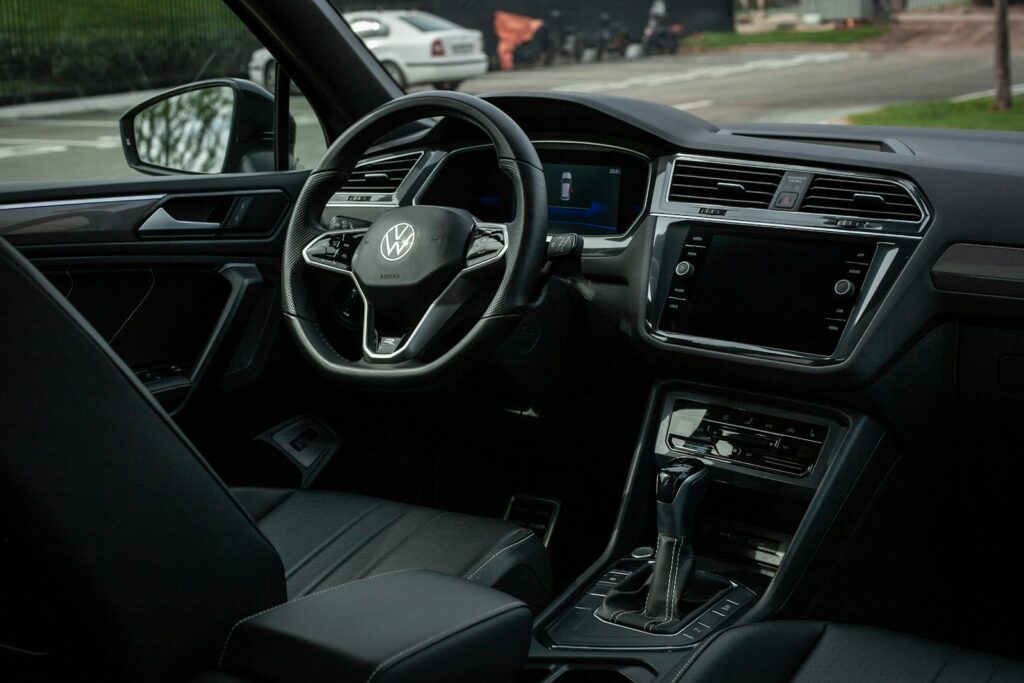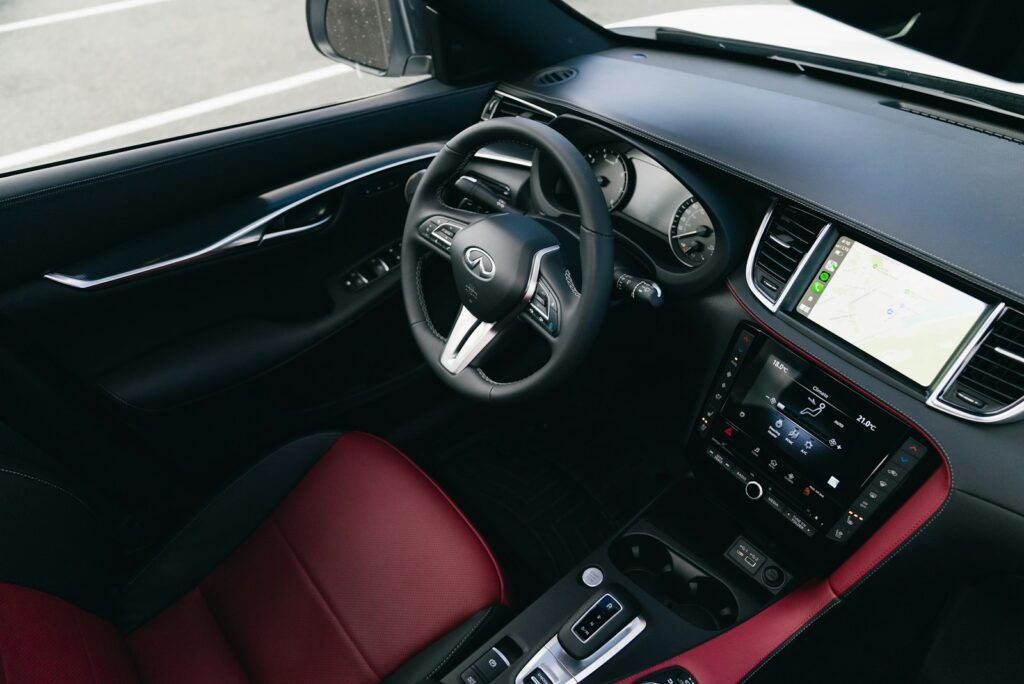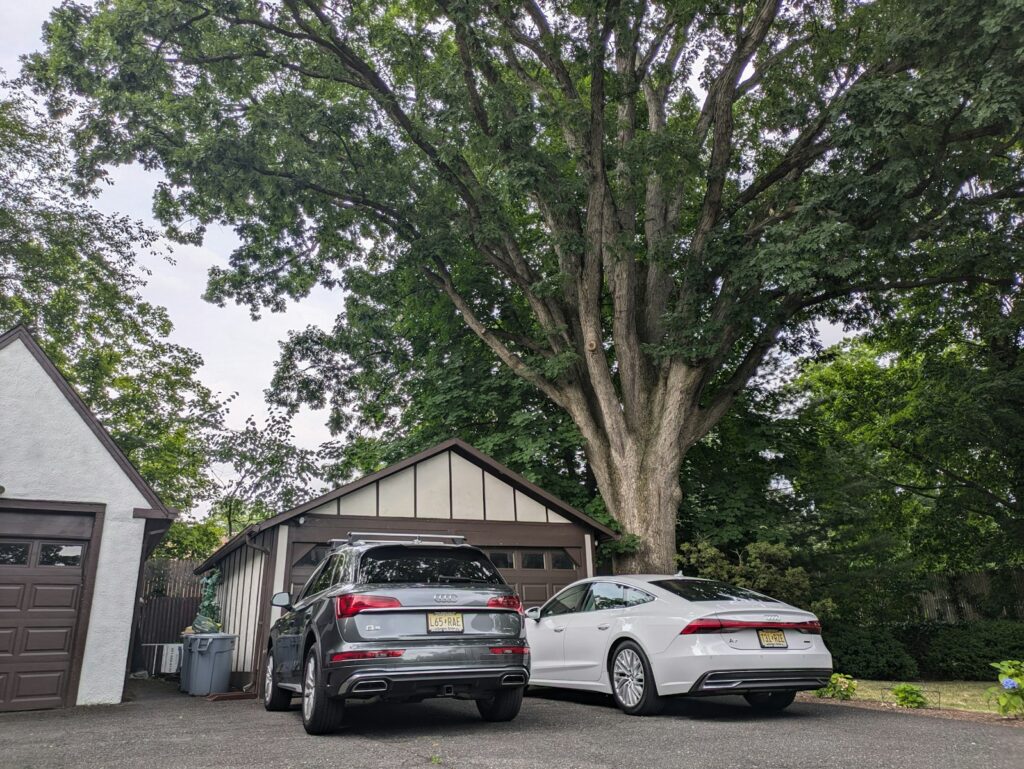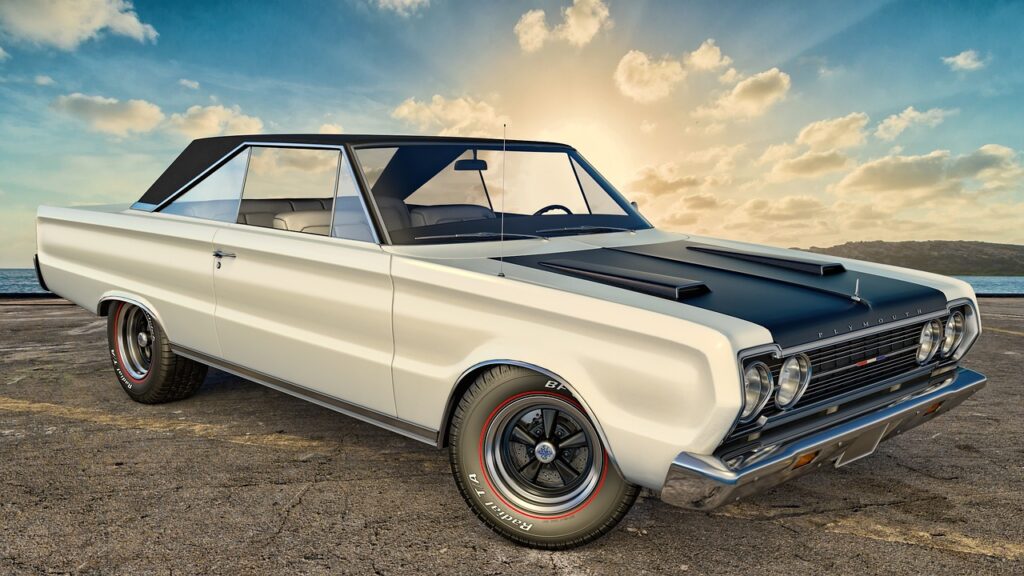There’s something undeniably exciting about driving a brand-new car off the lot. That gleaming paint, the unmistakable ‘new car smell,’ the pristine interior, and perhaps even those envious glances from your neighbors – it all contributes to a powerful sense of accomplishment and fresh beginnings. For many, it feels like a significant milestone, a tangible reward for hard work.
However, beneath this alluring surface, a harsh financial reality often lurks, one that dealership commercials are keen to keep out of sight. Financial experts universally agree: buying a new car is frequently one of the worst financial decisions a person can make. It’s not just a minor expense; it’s a significant drain on your wealth that can impact your financial security for years to come.
To empower you with the knowledge needed to make smarter choices, we’re dissecting the most common and costly financial traps that specifically target new car buyers. This in-depth guide will reveal how the allure of a new ride can lead you down a path of financial regret and, more importantly, equip you with the insights to steer clear of these pitfalls.

1. **Buying a Brand New Car (Instant Depreciation)**The moment you drive a brand-new car off the dealership lot, its value plummets. This isn’t an exaggeration or a slow decline; it’s an immediate and substantial hit to your investment. On average, a new car depreciates by 10–15% the very second you leave the dealership, and this loss can climb to 20–30% within the first year alone.
Imagine purchasing a $40,000 vehicle. Within just 12 months, that car might only be worth $30,000, or even less. That’s a staggering $10,000 loss, all for the fleeting pleasure of being the car’s first owner. As self-made millionaire and bestselling author David Bach starkly puts it, “Nothing you will do in your lifetime, realistically, will waste more money than buying a new car.”
He further emphasizes this point, calling it “the single worst financial decision millennials will ever make.” The fundamental issue is that you are buying a rapidly depreciating asset. Unlike a home or an investment that can appreciate, a new car’s value is almost guaranteed to diminish quickly, leaving you with less asset value than you paid.
2. **Financing a Depreciating Asset**Adding insult to injury, most people don’t pay cash for a new car; they borrow money to buy it. This decision to finance a rapidly depreciating asset compounds the financial mistake. You’re taking on debt for something that is losing significant value even before you make your first payment.
David Bach highlights the inherent contradiction in this choice: “Why would you borrow money to buy an asset that immediately goes down in value by 30 percent?” This practice means you’re paying interest on a loan for an item that is worth less than the loan amount almost from day one. It’s a recipe for negative equity, where you owe more than the car is worth.
The interest payments themselves are a cost of money that further inflates the true price of the vehicle, without adding any corresponding value. This financial burden can trap buyers in a cycle of debt, making it harder to build wealth or manage other financial obligations effectively.
Read more about: Dealership Dirt Uncovered: 15 Sneaky Car Sales Tactics Every Buyer Needs to Master

3. **Focusing on Monthly Payments over Total Cost**Car companies have mastered the art of perception, and their primary tactic to get you to buy is to shift your focus. They want you to concentrate exclusively on the seemingly manageable monthly payment, rather than the daunting total cost of the vehicle over the life of the loan. This strategy can be incredibly deceptive.
As David Bach advises, “Don’t think about monthly payments. Think about annual payments. Think about the entire term of the loan.” This broader perspective reveals the true financial commitment. An average new car payment has soared to over $700 a month in the U.S., according to J.D. Power data from November 2024.
If you’re spending $500 a month, as Bach illustrates, that’s $6,000 a year, not even including insurance or gas. This could easily amount to two or three months of your income annually directed toward a depreciating asset. Considering the total amount paid over a 5-6 year loan, you could be looking at tens of thousands of dollars, far outweighing the initial allure of a low monthly figure.
Read more about: Dealership Dirt Uncovered: 15 Sneaky Car Sales Tactics Every Buyer Needs to Master

4. **Trading in Cars Too Early (A Costly Change of Mind)**A surprising number of new car buyers find themselves wanting to switch vehicles shortly after their purchase, leading to a significant financial penalty. Edmunds transaction data from 2018 revealed that just over 23% of vehicle trade-ins were two years old or newer. This quick turnaround is almost always a financial misstep.
Two years is generally insufficient time to reach the break-even point on a car loan, meaning most individuals who swap cars this early will owe more money on the loan than the vehicle is actually worth. This “costly change of mind” results in substantial financial losses that easily eclipse any initial savings achieved through diligent price shopping.
Consider a fictitious scenario based on real data: a 2017 Honda Accord LX purchased for an “out-the-door” cost of about $22,700. If sold just two years later, its trade-in value might be $13,522. That’s a 40% loss, or $9,185 in actual dollars, in just 24 months. For a vehicle that depreciates faster, like a 2017 Ford Fusion SE, the loss could be 47%, totaling $11,314 from an initial average price of $21,713 before taxes and fees.

5. **Rolling Negative Equity into a New Loan**When you trade in a vehicle that is worth less than the outstanding balance on its loan, you’re faced with what’s known as negative equity. Instead of paying off this deficit out-of-pocket, many buyers opt for a financially detrimental shortcut: they roll this unpaid balance into the loan for their new vehicle. This seemingly convenient solution creates a vicious cycle.
By adding the old car’s debt to the new car’s loan, you immediately start with a larger principal amount, making the new vehicle inherently more expensive than its sticker price suggests. This practice also necessitates extending the loan term further, pushing out the timeline before you can gain any equity in the new car. It’s like starting a marathon already behind the starting line.
The implications are significant: higher monthly payments (or longer loan terms to keep payments similar), more interest paid over time, and a prolonged period where you remain underwater on your vehicle. This makes it incredibly difficult to achieve financial freedom and can create an ongoing sense of being trapped by car debt.
Read more about: Steering Clear of Financial Disaster: Critical Mistakes Luxury Car Buyers Make with Loans and Ownership

6. **High Insurance Costs for New Vehicles**The financial burden of a new car extends far beyond the purchase price and loan payments. One often-overlooked cost is the significantly higher insurance premiums associated with newer models. Insurance companies factor in several elements that drive up these costs, making new car ownership more expensive annually.
New vehicles typically have a higher replacement value, meaning if your car is totaled, the insurer has to pay out more. They also often come equipped with advanced features and technology, which, while beneficial, can be more expensive to repair or replace if damaged. Furthermore, if you’re financing a new car, your lender will almost certainly require you to carry comprehensive and collision coverage, adding to the premium.
In contrast, older, less valuable cars often come with lower premiums. Depending on the vehicle’s age and worth, you might even have the option to forgo comprehensive or collision coverage, significantly reducing your annual insurance expenditure. This difference in insurance costs is a crucial component of the true cost of ownership that new car buyers often underestimate.
Read more about: Drove it Regretted it: 12 Compact Models That Made Owners Question Their Judgment on the First Commute.

7. **Inflated Manufacturer’s Suggested Retail Prices (MSRPs)**Automakers have developed a sophisticated strategy to manage public perception of car pricing, a method that often disadvantages the consumer. According to Tyson Jominy, vice president of data and analytics at J.D. Power, carmakers have been inflating their Manufacturer’s Suggested Retail Prices (MSRPs) in recent years. This creates an artificial baseline that makes subsequent ‘deals’ appear more attractive than they truly are.
They then offer various incentives, rebates, and discounts to entice buyers. However, Jominy notes that “all the incentives they are giving is just wiping out that increase” in MSRP. Essentially, consumers are often getting what looks like a discount, but it’s merely a return to a more reasonable price point after an initial markup, rather than a genuine reduction.
This cycle of inflated prices followed by incentives means that despite transaction prices potentially decreasing slightly, the fundamental affordability problem persists. Combined with weaker trade-in values for older vehicles, this leads to monthly car payments remaining stubbornly high, making it harder for the average consumer to truly afford a new car despite seemingly competitive offers.
Navigating the complexities of car purchases requires more than just avoiding the obvious traps; it demands a deeper understanding of advanced financial errors and often-overlooked considerations. While the initial pitfalls can chip away at your financial foundation, the subsequent mistakes can truly entrench you in a cycle of debt and missed opportunities. This second section will delve into the critical, yet less obvious, financial missteps new car buyers frequently encounter, offering actionable advice to steer you toward smarter decisions and greater financial security.

8. **The Trap of Excessively Long Loan Terms**When facing the daunting prospect of high monthly car payments, it’s tempting to look for ways to reduce that immediate financial pressure. One common ‘solution’ often presented, or considered by buyers, is extending the loan term. This means opting for a 72-month loan, or even pushing it to an 84-month term, to spread out the cost and lower the monthly payment. While it might seem like a manageable way to fit a new car into your budget, this approach comes with significant long-term financial repercussions.
Extending the loan term doesn’t actually reduce the total cost of the car; it almost always increases it. You’ll end up paying far more in interest over the life of the loan. This is money that simply disappears, adding to the overall expense of a rapidly depreciating asset without contributing any tangible value back to you. It’s a classic example of reducing short-term pain at the expense of long-term financial health.
Furthermore, longer loan terms exacerbate the problem of negative equity. If your car depreciates quickly (which new cars do), and you have a very long loan, you’ll likely be ‘underwater’ on your loan for an extended period. This means you owe more than the car is worth, making it difficult to sell or trade in the vehicle without incurring a significant financial loss. As Tyson Jominy of J.D. Power notes, while extending the loan term is a lever consumers can pull to lower payments, it doesn’t truly address the fundamental affordability issues plaguing the industry.
Read more about: Dealership Dirt Uncovered: 15 Sneaky Car Sales Tactics Every Buyer Needs to Master

9. **The Peril of Putting Money Down on a Lease**Leasing has emerged as an increasingly popular option for new car buyers, particularly as affordability challenges persist and electric vehicle incentives are often applied to leases. The allure of lower monthly payments compared to purchasing can be very strong. However, a common mistake many lessees make, often encouraged by the desire for even lower monthly outlays, is putting a significant down payment on the lease. This seemingly innocent action can expose you to unnecessary financial risk.
J.D. Power’s Tyson Jominy strongly advises against this practice. He states, “You don’t want to put any money down on it because if you total your car, any insurance will only cover the value of the vehicle, and you’re out that deposit.” Unlike a purchased vehicle where a down payment builds equity, a down payment on a lease is essentially prepaid rent. If the leased vehicle is stolen or totaled shortly after you drive it off the lot, your insurance will cover the vehicle’s market value, but that upfront cash you paid will likely be lost.
Consider this carefully: if you’re looking to reduce your monthly lease payments, it’s often wiser to negotiate a lower capitalized cost (the car’s price) or explore options with a higher residual value rather than putting cash down. While a large down payment might make your monthly bill look more appealing, the financial vulnerability it creates in the event of an unforeseen incident far outweighs the perceived benefit. Protecting your upfront cash is crucial for your overall financial security.
Read more about: Unleash Your Inner Mechanic: 15 Essential DIY Car Hacks to Save a Fortune on Maintenance

10. **Prioritize Needs Over Wants for Lasting Value**The excitement of buying a new car often leads buyers down a path of emotional decisions, swayed by dazzling features, luxurious interiors, or the latest technology. It’s easy to get caught up in the ‘bells and whistles’ that add significantly to the vehicle’s price tag but may not align with your actual, long-term transportation needs. Making a purchase based purely on desire rather than thoughtful necessity is a costly mistake.
Personal finance expert Suze Orman, known for her pragmatic advice, advocates for a needs-based approach. She advises, “Forget about the bells and whistles you want. Paying less helps you pay off the car faster.” This simple truth highlights how extraneous features, while appealing, only serve to inflate the initial cost and subsequent payments, delaying your path to financial freedom.
To avoid this pitfall, Edmunds suggests being “especially thoughtful about the needs your new set of wheels should satisfy.” This involves considering variables that might alter your future transportation requirements, such as a potential change in family size or an upcoming move. Ensuring your vehicle is equipped for both your current tasks and your potential future needs helps prevent the costly “change of mind” that often leads to early trade-ins and financial losses. Choosing a car that genuinely meets your functional requirements, rather than just your aspirational desires, is a cornerstone of smart car buying.
Read more about: Unleash Your Inner Mechanic: 15 Essential DIY Car Hacks to Save a Fortune on Maintenance

11. **Master the Art of Pre-Purchase Research and Test Drives**In the competitive world of car sales, an informed buyer is an empowered buyer. Neglecting thorough pre-purchase research and an effective test drive is a critical oversight that can lead to buying the wrong vehicle and, subsequently, costly regrets. Many buyers, out of brand loyalty or simple haste, overlook vital information that could save them thousands and ensure a better fit for their lifestyle.
Edmunds emphasizes the importance of going beyond your usual preferences: “Read expert and consumer reviews. Maybe you’ve always been loyal to a brand and have never bothered looking at the competition. Reviews from actual owners and experts may point out issues to be aware of or other vehicles that may be a better fit.” This broadens your perspective, highlighting potential flaws or unexpected advantages of different models you might not have considered.
Furthermore, your test drive should be a strategic evaluation, not just a quick spin around the block. Edmunds recommends driving the vehicle on a route that mimics your normal commute and not being afraid to ask for an extended test drive. You should also “Climb in and out of every seat in the vehicle and test all seat adjustments. Will the back seat have enough room for rear passengers to sit comfortably? How is the visibility? Is it easy to get in and out of the vehicle?” This meticulous approach ensures the car truly fits your daily life and comfort needs, preventing buyer’s remorse later on.
Read more about: The Savvy Buyer’s Playbook: Unlocking Optimal Savings and Value on Your Next Car Purchase

12. **Uncover the True Cost of Car Ownership Beyond the Sticker Price**The sticker price and monthly payment are merely the entry points to the financial commitment of car ownership. Many new car buyers make the mistake of focusing solely on these figures, neglecting to investigate the broader spectrum of costs that accumulate over the vehicle’s lifespan. This narrow focus can lead to unexpected financial strain and an inaccurate understanding of what you’re truly paying for your new ride.
Edmunds advises buyers to “Determine the true cost of ownership before making your deal.” This critical step involves a comprehensive investigation into several key areas: “Investigate anticipated repair rates, maintenance, insurance and fuel costs.” These elements, often overlooked in the initial excitement of a purchase, can significantly inflate your annual expenditure. For instance, new vehicles typically have higher insurance premiums due to their higher replacement value and the need for comprehensive coverage if financed.
By delving into these anticipated ongoing expenses, you gain a clearer picture of the vehicle’s long-term affordability. A car with a lower sticker price might have higher fuel consumption, more expensive parts for repairs, or a reputation for higher maintenance needs. Conversely, a slightly more expensive model might save you money in the long run through better fuel efficiency and lower maintenance costs. A holistic view of ownership costs is essential for making a genuinely informed and financially sound decision.
Read more about: How to Uncover a Used Car’s Past: A Consumer’s Guide to Identifying Former Rentals, Taxis, and Police Vehicles

13. **Take Control by Securing Your Own Financing Before Visiting the Dealership**Many car buyers walk into a dealership unprepared, relying on the dealer to arrange their financing. This puts them at a significant disadvantage, as dealerships often profit from securing your loan. To ensure you get the best possible rate and retain control of the buying process, it’s crucial to take proactive steps to secure your financing *before* you even set foot on the car lot. This strategic move empowers you with leverage and transparency.
Tyson Jominy of J.D. Power strongly recommends this approach: “research your own credit rating and find out what interest rate you qualify to get and then secure a loan at the best rate you can find before ever going to the dealership.” He points out that “Credit unions offer some of the best deals out there, and will get you the best rates.” Having a pre-approved loan from an outside lender gives you a baseline interest rate, allowing you to accurately compare any financing offers from the dealership.
This process transforms you from a vulnerable borrower into an informed negotiator. While dealers do make money on financing and might not offer the best ‘deal’ if you show up with all cash, knowing your creditworthiness and having a solid interest rate offer means a dealer “might beat your best rate.” This competitive dynamic works in your favor, ensuring you don’t overpay for the money you borrow to finance your new vehicle.
Read more about: Your Ultimate Guide to Navigating the Used Car Market: Avoid Rip-Offs and Drive Away with Confidence

14. **Expand Your Search Beyond Local Dealerships for Better Deals**In today’s interconnected world, limiting your car search to only local dealerships can significantly restrict your access to the best prices and inventory. While convenience is appealing, a broader geographical search can reveal substantial savings, especially when local supply and demand dynamics inflate prices in your immediate area. Smart buyers are increasingly looking beyond their zip codes to maximize their purchasing power.
Tyson Jominy advises against geographical limitations, stating that “dealers in the Plains states and Upper Midwest usually have the best deals.” He cites examples such as “Iowa and Nebraska, Wisconsin and Minnesota,” where dealers were offering prices below MSRP even during the supply chain crisis in 2022 when markups were common elsewhere. This phenomenon is often attributed to regional supply and demand disparities: a dealer with abundant inventory in a less competitive market can afford to offer more attractive pricing than one with limited stock in a high-demand area.
The good news is that you don’t necessarily need to book a flight to secure these deals. Jominy suggests utilizing the internet to find vehicles in these advantageous regions and then having the car shipped to you. This strategy leverages the power of online shopping to overcome geographical barriers, allowing you to tap into a wider market for competitive pricing. By thinking nationally rather than just locally, you can significantly increase your chances of finding a truly great deal on your next car, rather than being beholden to local pricing pressures.
Read more about: Navigating Out-of-State Used Car Purchases: A Comprehensive Consumer Reports Guide to Smart, Safe Buying
While the siren song of a new car is powerful, a truly savvy buyer understands that financial prudence should always steer the wheel. From dissecting the true cost of ownership and mastering your financing to expanding your search for the best deals, every decision you make holds the power to protect or deplete your hard-earned money. By arming yourself with knowledge and adopting these practical strategies, you’re not just buying a car; you’re investing in your financial future, ensuring that your journey, both on the road and in life, is a well-planned and prosperous one. Don’t just drive off the lot; drive off with confidence, knowing you’ve made the smartest choice for your wallet.






